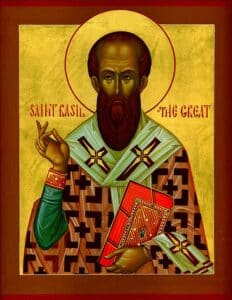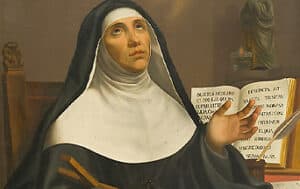The Mystical Theology of St. Bernard, first published in 1940, accomplishes three main tasks. First, it gives an account of the theology underlying St. Bernard’s diagnosis of man’s condition and the cure he thought people should take, monastic asceticism leading to mystical union. Second, the Mystical Theology of St. Bernard rectifies misinterpretations of St. Bernard’s doctrine of carnal love as the first step to pure love. Third, the book uncovers the major sources of this system of theology, up to Bernard’s time: Cicero, Augustine, the Epistle of St. John, Dionysius, and the Rule of St. Benedict. How much did you know about St. Bernaraed?
Summary of The Mystical Theology of St. Bernard

The book is based on lectures given in 1933 by Etienne Gilson at the University College of Wales. The Mystical Theology of St. Bernard explores the theology of Saint Bernard, the eleventh-century French priest. The Mystical Theology of St. Bernard presents a systematic approach to understanding St. Bernard’s doctrine rather than focusing on his life or broader theology. The emphasis is placed on showing how Bernard’s experiences contribute to a theological framework that is both rigorous and synthetic, asserting that his mysticism, while practical, is a science with profound implications.
The Mystical Theology of St. Bernard is a seminal work that is worthy of the many reprintings it has received. This book is a valuable resource for scholars and students of Christian mysticism, as well as anyone interested in the spiritual teachings of one of the most influential figures in medieval Christianity.
As this is not a biography, it is important to write a bit about what is in the book. All of the chapter titles are in Latin. First up is Regula LXXIII. The second chapter is Reggio Dissimilitudes. The third chapter is Schola Caritas. The fourth chapter is Parasdisus Cilaustrales. The fifth and final chapter is Unitas Spiritus. The book is not in Latin, but it is 284 dense pages. It will only be of interest to serious Catholics.
About Etienne Gibson
The author of The Mystical Theology of St. Bernard is interesting. Étienne Henri Gilson was born on 13 June 13, 1884; he died on September 19, 1978. Gidson was a French philosopher and historian. He was a scholar of medieval philosophy, and Gibson originally specialised in the thought of René Descartes; he philosophized in the tradition of Saint Thomas Aquinas. In 1946, he attained the distinction of being elected a member of the Académie française. He was nominated for the Nobel Prize in Literature.
There is a bit of a tail to him. Even though he died in 1978, in 2009, the International Étienne Gilson Society was created “to promote the thought of Étienne Gilson and classical philosophy in the academy and culture.” It publishes a journal, Studia Gilsoniana, in France.
The Rule of St. Benedict
One of the guiding tenets of St. Bernard’s life, according to The Mystical Theology of St. Bernard was the rule of St. Benedict. The Rule of Saint Benedict is a book of precepts written in about 530 by St. Benedict of Nursia for monks who live communally under the authority of an abbot. The idea of these Spartan rules is that the monks will be closer to God. There are seventy-three chapters, but it can be summed up.
The spirit of Saint Benedict‘s Rule is summed up in the motto of the Benedictine Confederation: peace and the traditional pray and work. Compared to other precepts, the Rule provides a moderate path between individual zeal and formulaic institutionalism; because of this middle ground, it has been widely popular. It was a reaction
Conclusion
The Mystical Theology of St. Bernard is only of interest to serious Catholics who wish to deepen their knowledge of the faith. Those people will find this book enlightening and useful. For others, the book will not be of interest. At 264 pages, the book is somewhat long and it is dense.








